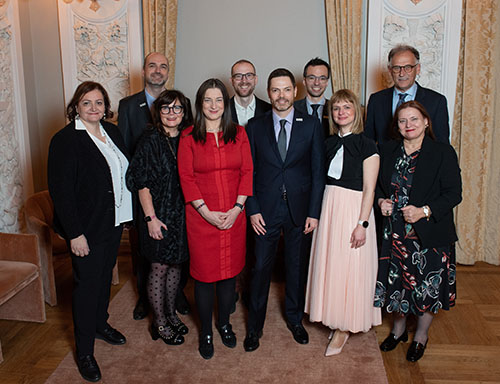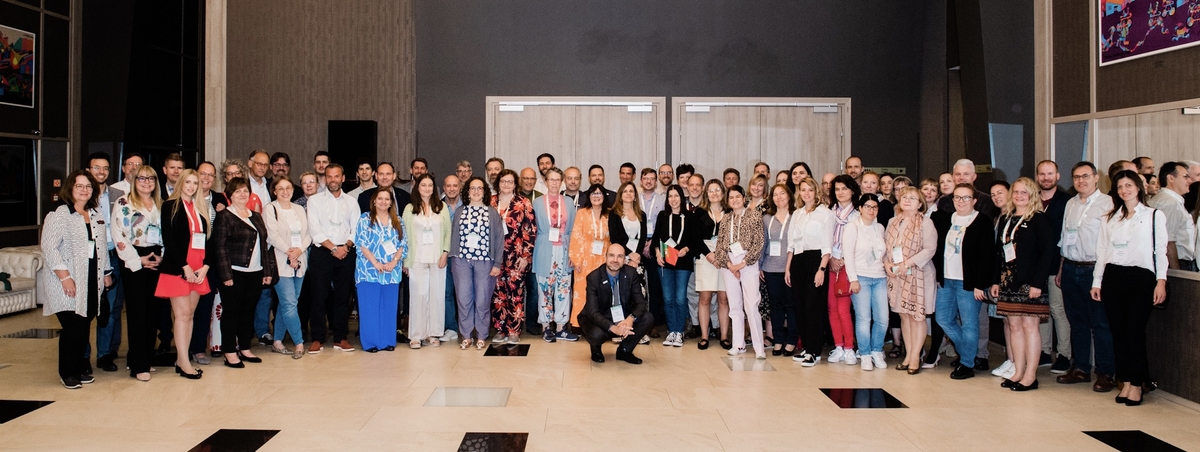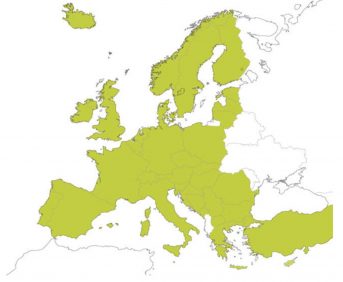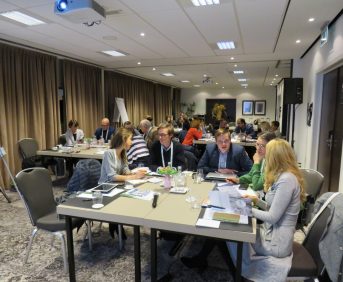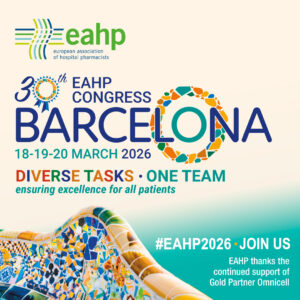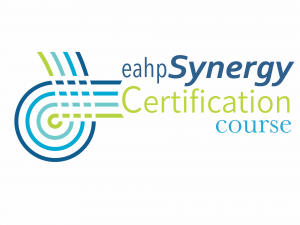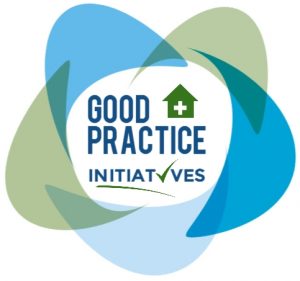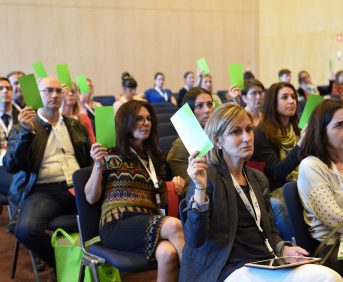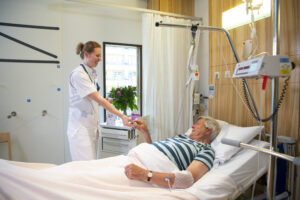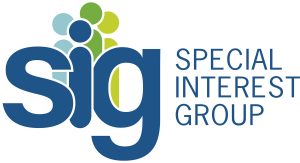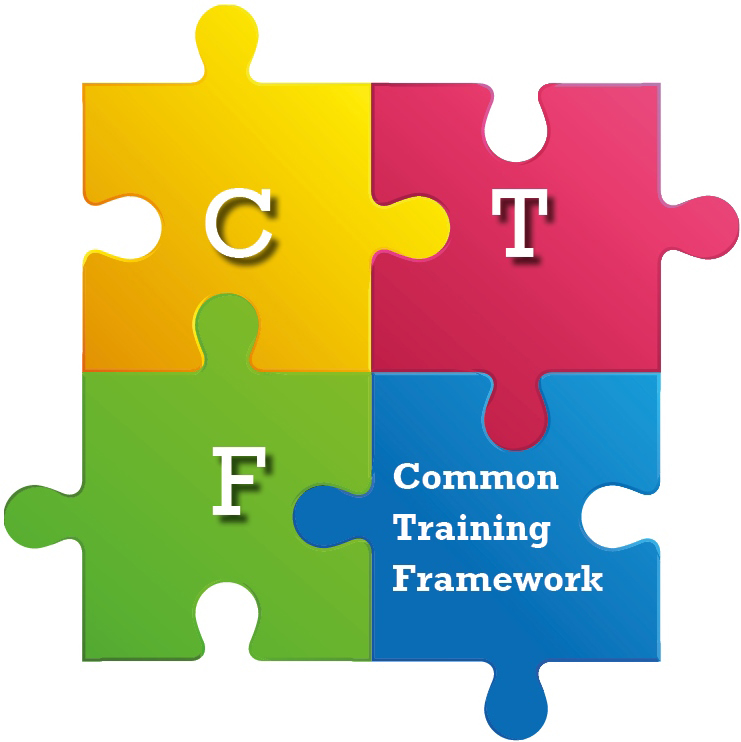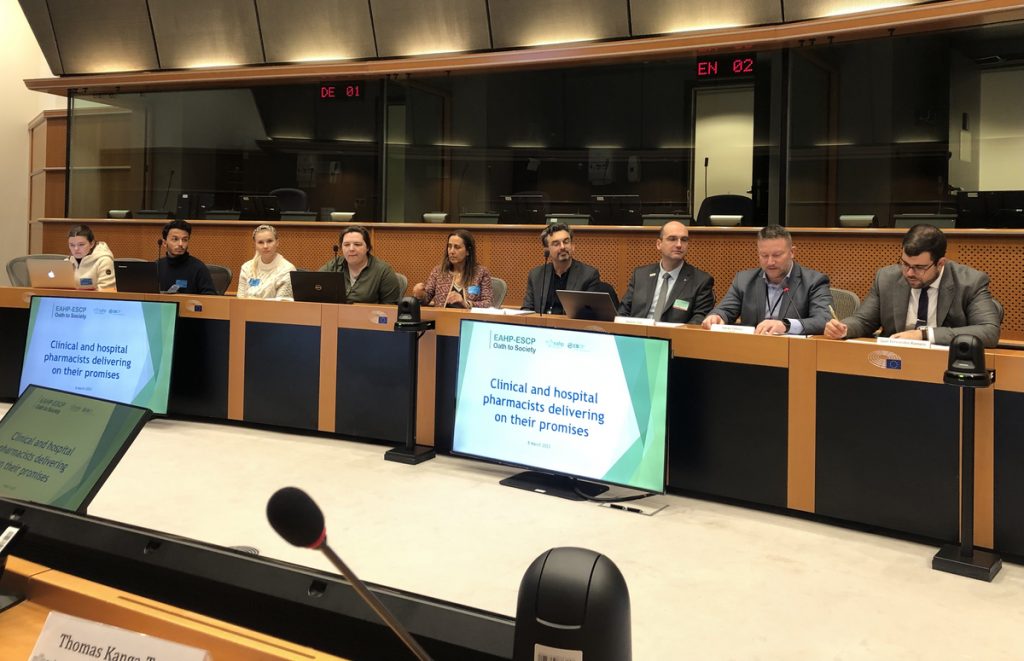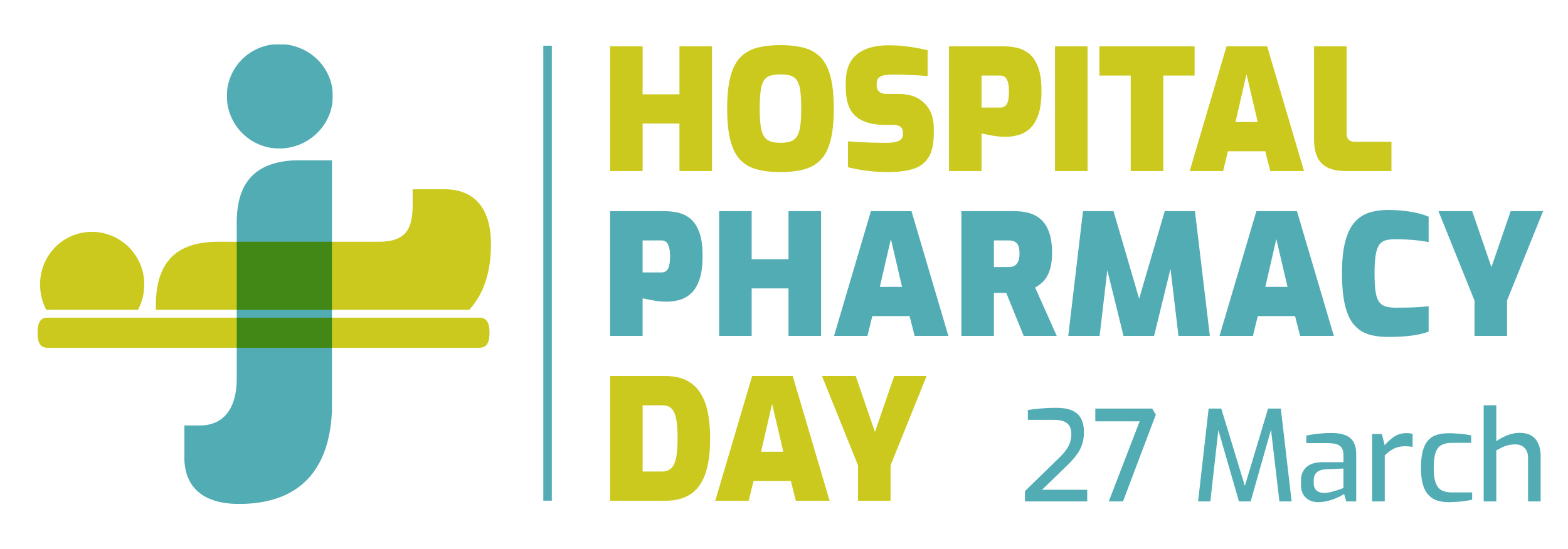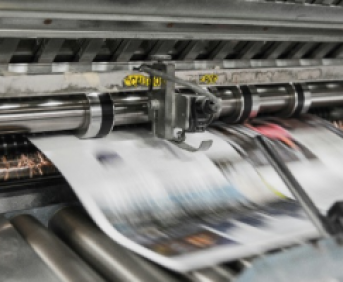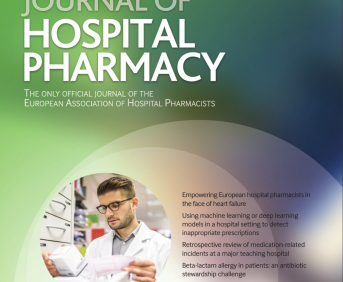Pharmaceutical Consultation in Primary Care Multidisciplinar Team
European Statement
Clinical Pharmacy Services
Author(s)
Claudia Elias, Nadine Ribeiro, Anacleto Mariana, Amaral Daniel, Cimadeira Fátima, Abreu Ana Paula, Vaz Filomena, Martinho Helena , Bernardo Mónica , Mateus Rita , Martins Sandra
Why was it done?
The care of elderly patients with multi-morbidities is a great challenge faced by the our National HealthCare System, due to the complexity of the most vulnerable in society. When the medication risks begin to outweigh benefits, polypharmacy may become inappropriate. Management of polypharmacy is an essential element of patient safety and adherence, preventing medicines harm and infectivity. In the primary care setting there was no integrated multidisciplinary pharmacotherapy management service.
What was done?
Clinical Pharmacist was included in multidisciplinary team in Primary Care for Pharmaceutical Consultation implementation.
How was it done?
The Pharmacy Department and of the Regional Team, supported by the Board of Directors, joined efforts for the implementation of a Program for the Management of Polymedication in Complex and Chronic Fragile. It implies patients with medication problems referral by physicians to the pharmacist. Pharmacist schedules a face-to-face, or telephone, interview, inviting them to bring all drug packages. During consultation, patient’s health literacy, therapeutic adherence and drug management skills are assessed. Doubts are clarified and information on drugs best use and non-pharmacological measures benefits are provided. The pharmacist then makes the pharmacotherapeutic review looking up for any unaddressed medication related problem. In conjunction with the attending physician, they agree in the best pharmacotherapeutic plan for the patient.
What has been achieved?
The project started 2.5 years ago, being implemented in four primary care units. We had 124 patient referrals and made 171 consultations. Before Covid pandemic, all the contacts were face-to-face now 60% are teleconsultation. The median age is 76 years, 59% female with an average of 11 comorbidities and 11 medicines prescribed/patient, being cardiovascular and endocrine pathologies the most commons. Only 33% of patients took medicines has prescribed and of them, only 61% could identify their indication. The most prevalent drug problems were safety (42%) and need (25%). Off the 539 interventions, 48% addressed desprescription, drug substitution and dose adjustment by physicians; 14,3% aimed drug education use by patients or caregivers; 88% of the suggested interventions were accepted.
What next?
We expect to expand the project to other health care units briefly.
Even though the inclusion of a clinical pharmacist in primary care units is currently centered in the management of polypharmacy, it may encourage involvement in other activities that enhance the pharmacist role in the primary care units.
Development of a clinical pharmacy program for very frail elderly hospitalized patients
European Statement
Clinical Pharmacy Services
Author(s)
Baptiste Fulbert, Florian Poncelet, Marilyne Legrand, Céline Mongaret, Dominique Hettler
Why was it done?
Very frail elderly patients are a particularly high-risk population due to their frequent multi-medication and the risk of associated adverse effects.
Clinical hospital pharmacists play an increasingly important role in patient care.
What was done?
We developed a program comprising several clinical pharmacy services for very frail elderly hospitalization.
How was it done?
We conducted a 3 month prospective study in short and middle geriatric stay included patients admitted in emergency department aged at least 75 with a Short Emergency Geriatric Assessment (SEGA) frailty score above 11. We performed, as clinical pharmacy services, best possible medication history (BPMH) in the emergency department and medication reconciliation at admission (MRA) in hospital ward and medication review during hospitalization. Medication reconciliation at discharge (MRD) was carried out on a geriatric medicine unit over 2 months. All activities were performed by pharmacy students, two residents and a pharmacist.
What has been achieved?
120 patients were included. 96 BPMHs were performed : 62 in emergency department and 34 in hospital ward.
MRA was performed for 81 patients (68%), identifying 774 discrepancies of which 19 (3%) were unintentional discrepancies (UD), 6 (32%) involving Digestive Tract and Metabolism drugs. 9 (47%) of these UDs concerned omissions.
During the 163 medication reviews, pharmacist performed 98 pharmaceutical interventions (PIs) for 53 patients, with an acceptance rate of 56%. Most of drugs involved with the acceptance rate was Nervous System drugs (20;36%) and Digestive Tract and Metabolism drugs (16;29%). Among the accepted PIs, 22 (40%) relate to dosage adjustment.
Finally, MRD was performed for 25 (21%) of patients identifying 256 discrepancies, 8 of which (3%) were UDs, mainly involving Digestive Tract and Metabolism drugs (5;63%). 5 (63%) of these UDs concern omissions.
What next?
The high number and nature of the discrepancies support the idea that this population is a relevant target for a clinical pharmacy program.
This program could be applied in other hospitals with the hospital pharmacists and provide a better care for these patients.
The development of MRD in geriatric wards and collaboration between hospital pharmacists and primary care professionnals, by a discharge summary to handover the changes between the entry and the exit prescription can complete this study.
ORAL IVERMECTIN EFFECTIVENESS IN THE TREATMENT OF PERMETRIN-RESISTANT SCABIOSIS: A DESCRIPTIVE, RETROSPECTIVE AND OBSERVATIONAL STUDY
European Statement
Clinical Pharmacy Services
Author(s)
Emilio Monte-Boquet, Mª Jesus Cuellar-Monreal, Mª Vicenta Tarazona-Casany, Ana Alejandra Garcia-Robles, Eduardo Guerrero-Hurtado, Inmaculada Beltran-Garcia, Patricia Polo-Montanero, Antonio Solana-Altabella, Jose Luis Poveda-Andres
Why was it done?
Ivermectin is used as a therapeutic alternative for permethrin-resistant scabies. The recommended treatment consists of administering two single doses (SD) separated by 7-14 days. An increased incidence and resistance to permethrin was observed in late 2020 possibly influenced by SARS-CoV-2 pandemic.
What was done?
To assess the effectiveness of oral ivermectin as a treatment for topical 5% permethrin-resistant scabies in patients from a tertiary hospital and to analyze the characteristics of the sample and the treatment.
How was it done?
An observational, retrospective and descriptive study was done including patients who collected Ivermectin 3mg tablets in the Outpatient Pharmaceutical Care Unit of the hospital between April 2020 and April 2021. All patients were previously treated with 5% permethrin and had failed. Treatment with ivermectin was considered effective in patients who were discharged from Dermatology Clinics or did not consult for itching or other symptoms 4 weeks after the last dose. Other variables were: number of doses received, age, sex and antecedents within family nucleus or cohabiting cases were also collected.
What has been achieved?
A total of 37 patients were included and 39 applications were made. There were 16 applications from April 2020 to December 2020 (mean of 1.78±1.79 applications/month [95%CI:0,41-3,05), and 23 from January to April 2021 (mean of 4,6±2.6 applications/month [95%CI:1,37-7,83]). Ivermectin was effective in 87,2%(34/39) patients and in the remaining 12,8%(5/39) therapeutic failure happened, so they required treatment for a second time. A patient was excluded because it was unclear if treatment had been ineffective or reinfestation happend. The 56,4%(22/39) of patients received two SD separated for 7–14 days. The 58,5%(24/39) of patients were women and the mean age of the sample was 31,1±19,3 years old (95%CI:26,8-37,4). The 54,0%(21/39) of the patients had between 11-30 years old, and the 74,4%(29/39) had a history or cohabitants within their family nucleus.
What next?
In our study sample, effectiveness of Ivermectin was greater than 90% in scabies resistant to topical 5% permethrin and seems independent of the number of doses received. Results suggest that scabies mainly affects women and Young people. Infections in cohabitants seem to have an increased frequence and may had been influenced by confinament and delays of treatments during SARS-CoV-2 pandemic.
Pharmacogenetic variation and the importance for medication treatment in patients at a Geriatric Psychiatry Unit
European Statement
Patient Safety and Quality Assurance
Author(s)
Margareth Kristiansen, Viola Melvik, Jahn Olav Svartsund, Randi Trondsen, Lise Nystad
Why was it done?
Patients admitted to the unit often have long-term illnesses, extensive medication histories and lengthy medication lists at admission. Psychopharmaceuticals are largely metabolized by enzymes that have polymorphism. We wanted to investigate the degree of pharmacogenetic variation in our patients and if genetic testing would have an impact on medication treatment.
What was done?
We have investigated the degree of genetic variation in our patients and to what extent the genetic profile impacted the choice of medication treatment.
How was it done?
We started out educating the staff at the ward. In 2018, 37 of a total 40 admitted patients were genetically tested at admission. The implication of the test result was discussed during the morning rounds for each patient ensuring implementation.
Results from each genetic test were continuously entered into a database including age, gender and medications at admission and discharge. Change of medication due to the genetic test result was recorded.
26 (70%) of patients had a genetic profile that could impact the choice of medication treatment. As a result, half of the patients had changes made to their medications. A total of 27 changes were made in these patients.
What has been achieved?
We have established that patients at the geriatric psychiatry unit in Nordland Hospital Trust have a pharmacogenetic profile that affects medication treatment options. Testing has an impact on the choice of pharmacotherapy to such an extent that all patients are now genetically tested at admission.
What next?
Pharmacogenetic testing has proven easy to implement and at the same time of substantial benefit for many patients. We also use our experiences to educate and inspire health care professionals in the community setting including GP’s so they can understand, reuse the test results and identify when a pharmacogenetic test would be a useful tool to determine the most adequate choice of pharmacotherapy.
EXPANDING OPPORTUNITIES FOR PHARMACISTS IN ONCO-HEMATOLOGIC CLINICAL TRIALS: DESIGN AND IMPLEMENTATION OF THE OUTPATIENT SERVICE MODEL
European Statement
Clinical Pharmacy Services
Author(s)
Eugenia Serramontmany Morante, Patricia Garcia Ortega, Lorena Garcia Basas, Pablo Latorre Garcia, Pilar Rovira Torres, Laura Maños Pujol, Isabel Cidoncha Muñoz, M. Queralt Gorgas Torner
Why was it done?
The provision of outpatient oncology services by pharmacists is still limited, but it is an emerging role. It can add value while increasing the quality of patient care required, maximizing the likelihood of achieving positive outcomes and thus improving the patient’s quality of life. It is important to incorporate clinical pharmacists into outpatient clinics to ensure the safe use of investigational drugs and guarantee the best treatment for the patient.
What was done?
The oncology clinical trials pharmacy team initiated an outpatient clinic at a tertiary hospital. This enabled review of patients’ medications, monitoring of interactions, appropriate oral chemotherapy counseling, design of medication diaries and instructions, discussion of side effects, as well as other dietary and daily living recommendations.
How was it done?
A multidisciplinary team was formed: pharmacy, medical, nursing, ancillary and administrative staff, to discuss circuits and strategies to address outpatient pharmacy clinic.
The pharmaceutical care program was implemented gradually during 6 months, first in phase I, then phases II and III clinical trials.
Factors including appointment scheduling, patient prioritization, clinic room availability as well as detailed definition of pharmaceutical activity were discussed, in order to have a standard procedure for all patients included in a clinical trial.
The group continued to meet weekly to further discuss the progress of the pharmaceutical care program and any obstacles and unforeseen events.
What has been achieved?
Medication has been dispensed to 8447 patients in the outpatient pharmacy, of which 1172 patients have been attended by the clinical pharmacist during the first 8 months (January-August 2021) of the programme’s implementation.
Pharmaceutical care at the first day of treatment has been provided to 275 patients to explain how to take the treatment and resolve doubts. The concomitant medication of 312 patients has been reviewed for the screening and 425 telephone queries about concomitant medication have been resolved.
What next?
The evolutionary change in cancer care along with the increase in the number of clinical trials and its complexity will emphasize the need to include the oncology pharmacist in the cancer care team. The role of a clinical pharmacist is vital to ensure the safety and controlled use of the drug, ensuring the best possible outcomes.
ADAPTING CLINICAL PHARMACY SERVICE PROVISION TO THE EMERGENCY DEPARTMENT DURING THE COVID19 PANDEMIC
European Statement
Clinical Pharmacy Services
Author(s)
Dearbhla Murphy, Mariosa Kieran, Jennifer Brown
Why was it done?
The Emergency Department (ED) at our institution is one of the busiest in Ireland. In 2019, there over 84,000 attendances. The ED CPS is multifaceted and involves clinical review of prescribed drugs, consultation with medical and nursing colleagues to ensure safe, effective and rational prescribing, drug supply and Medicines Reconciliation (MR). In order to meet patient requirements during the COVID19 pandemic, the ED was re-configured. The departmental changes necessitated realignment of the CPS to ensure evolving institutional requirements were being met while maintaining service provision.
What was done?
• ED Stock lists were reviewed and modified to ensure prompt availability of COVID19 treatments.
• Drug lists were devised for new ED zones to ensure availability of emergency and antidote medicines on a 24/7 basis.
• ED requirements for COVID critical medicines e.g. neuromuscular blockers, propofol, midazolam and antivirals were implemented in response to emerging evidence.
• Appropriate drug and fluid storage locations were reviewed in line with legislative requirements.
• Pharmacy technician top-ups were modified and standing orders introduced.
• Technician staff received Personal Protective Equipment (PPE) training to facilitate topping-up of drug presses in high-risk patient-facing areas.
• Access to critical care and COVID19 Respiratory Infection treatment protocols was expanded to ensure point of care access
• All associated SOPs were updated
• CPS provision was reviewed, changes introduced include:
1. fixed zone staffing allocations to reduce cross-contamination of staff
2. guidance on Infection Prevention and Control measures for completing MR patient interviews
3. electronic transfer of Clinical Pharmacist handover to ward based pharmacists
How was it done?
• A multidisciplinary team (MDT) of stakeholders was formed of Nursing Management, ED Consultants and the Pharmacy Department.
• The ED pharmacist coordinated the Pharmacy review.
• The procedures and policies governing CPS provision and ED drug stock holdings, storage and availability were reviewed and adapted.
• The MDT supported roll out of the changes in practice through communication and staff training.
What has been achieved?
Continuity of the CPS provision to the ED during COVID19 pandemic was ensured.
What next?
Through this review, the multidisciplinary ED team collaborated to successfully review CPS provision to adapt for the unique and evolving clinical needs of patients during the COVID19 pandemic. This ensured the safe delivery of a high quality CPS and continuity of drug supply.
PLAN FOR IMPROVING THERAPEUTIC EQUIVALENCE IN A HOSPITAL GPI
European Statement
Clinical Pharmacy Services
Author(s)
LUCIA JIMENEZ-PICHARDO, INMACULADA LOMARES-MANZANO, LEONOR GOMEZ-SAYAGO
Why was it done?
Hospital with 118 beds in which all medication prescribed by the doctor that was not included in the pharmacotherapeutic guide was purchased through an external pharmacy. The proposed objective was to elaborate an improvement plan in therapeutic equivalence, with the development of a TEG
What was done?
Therapeutic Exchange Guidelines (TEG) are an intervention on the prescription according to a previously agreed protoco, in which the prescribed drug is subtituted for the one available in the hospital (because it is considered equivalent or because it is a better therapeutic option).
In this way, the most appropriate drug included in the Pharmacotherapeutic Guide (PG) of the hospital would be selected.
How was it done?
A work schedule was established distinguishing five phases: a) Elaboration Phase, which consists of consulting and review of the medical specialties included in the hospital, b) Presentation / approval phase by the Pharmacy Commission, c) Modifications Phase, d) Disclosure Phase, through a clinical session to the hospital’s internists and other hospital medicians and e) Implementation Phase. For its preparation, a manual was consulted for the writing of TEG, guides from other reference hospitals and different bibliography obtained from Pubmed, as well as the technical data sheet of each drug.
What has been achieved?
The TEG is prepared over a period of 3 months and was structured with the following sections:
Therapeutic group according to the ATC classification of drugs (351), Reference drug included in the PG (443 drugs), Medicines not included
(620) y Recommended therapeutic attitude: substitute the one available at the hospital (469) (specifying dose and regimen), continue (82) or suspend treatment (69).
Subsequently, it was presented to the Pharmacy Commission, the appropriate modifications were made and the final version was released through a clinical session before its publication through the hospital’s intranet.
What next?
The therapeutic equivalence improvement plans are considered efficient management strategies, applicable in all hospitals and health centers. It is a multidisciplinary and continuous process that will require periodic reviews.
Hospital pharmacists contribute to a safe and efficient use of chimeric antigen receptor T cell drugs.
European Statement
Selection, Procurement and Distribution
Author(s)
José Luis Revuelta Herrero, Vicente Escudero, Roberto Collado, Belén Marzal, Ana Herranz, María Sanjurjo
Why was it done?
CAR-T cell-based therapies are advanced therapy medicinal products (ATMP) that are considered as drugs by the European regulatory authorities. ATMPs are usually associated with strong logistic and traceability requirements, serious adverse events and a high budget impact. Hospital pharmacists can help ensure a safe and efficient use of these drugs.
What was done?
A chimeric antigen receptor (CAR) T cell Therapy Committee was created in 2019 and it included members from the hematology, oncology, pediatric onco-hematology, hospital pharmacy, neurology, critical care medicine and immunology departments. An operating procedure defined the specific functions of the pharmacy department in the management of these drugs in the CAR-T cell program.
How was it done?
As some responsibilities might be shared with other professionals, it was key to define everyone’s contributions. In our case, an operating procedure with the responsibilities of the pharmacy department was developed based on the national and regional action plans for ATMPs in the national health system and the risk management plans for each drug. This operating procedure was reviewed and approved by the Committee.
What has been achieved?
The operating procedure was fully implemented and included the participation of hospital pharmacists in the following steps:
• Procurement: the inclusion of a patient in the program is agreed upon the Committee. The pharmacists provide a purchase order when all the requirements are met.
• Leukapheresis and shipment to the manufacturer: the apheresis is included in the computerized physician order entry (CPOE) and it is verified to confirm wash-out periods. Before the shipment, the pharmacists record the apheresis unique identifier and patient data.
• Product receipt: the pharmacists verify at receipt that the patient identity chain and the integrity of the product have been preserved.
• Bridge and lymphodepleting chemotherapy, CAR-T administration: specific protocols have been included in the CPOE. Prescriptions are verified by the pharmacists with special attention to the drug-free periods. After transporting the drug to the clinical unit and preparation, a pharmacy label for dispensing and administration is generated. This label includes a barcode for patient identity verification at bedside.
• Outcomes monitoring and pharmacovigilance: kits are provided to the clinical units for the management of CAR-T associated toxicities. Pharmacists are responsible for the adverse reactions reporting in coordination with clinicians.
What next?
We developed verification lists for each of the previous steps that have already been published (DOI: 10.3389/fonc.2021.636068). More ATMPs are expected to come and their management will require the participation of hospital pharmacists from different areas of expertise (procurement, clinical pharmacy, compounding etc).
Illustrating the role of the Diabetes Specialist Pharmacist in an acute hospital
European Statement
Clinical Pharmacy Services
Author(s)
Laura O’Donnell, Barry Keenan, Laura Loughran, Edel Davidson, Rosemary Donnelly, Sarah McGinnity
Why was it done?
In 2020, it was identified that diabetes specialist pharmacists working within diabetes inpatient teams were able to provide safe, effective and patient-centred care. However, it was equally identified that there was a lack of awareness of these new roles and their potential impact on care improvement. This is a major barrier to ensuring that specialist pharmacists become an integral part of diabetes inpatient teams.
What was done?
Diabetes specialist pharmacists from across Northern Ireland collaborated to define their role, and communicated their scope of practice in improving patient care as an infographic.
How was it done?
Acute hospital trusts in Northern Ireland were allocated temporary funding to demonstrate the benefits of a diabetes specialist pharmacist. There were localised differences in services provided according to the experience, and competence of the individual pharmacist, however as a team, pharmacists across Northern Ireland collaborated to help establish, develop and define the role. Work was mapped to the four guiding principles for medicines optimisation from the Royal Pharmaceutical Society Good Practice Guidance (2013). The comprehensive worklist was then transformed into an infographic to give a quick, visual and easy to understand illustration of the role.
What has been achieved?
The infographic is a unique tool to share the vision of what can be achieved by diabetes specialist inpatient pharmacists, and promotes clinical pharmacy services. The work was used to develop a business case for permanent funding, and is being used to inform a wider diabetes workforce planning strategy within Northern Ireland.
What next?
It is hoped that sharing this work will help inform and inspire teams who would like to incorporate a diabetes specialist pharmacist into their diabetes inpatient team, and provide a roadmap for those who are developing and establishing the role in their own hospital.
Next steps involve expanding the remit to include the other roles in which a diabetes specialist pharmacist can enhance care, for example outpatient clinics, and links with primary and intermediate care, to fully illustrate the role.
Partnership of Specialist Nurse and Specialist Pharmacist roles improves quality of care of IBD patients
European Statement
Clinical Pharmacy Services
Author(s)
Fernando Fuertes
Why was it done?
Monitoring of patients on immunomodulators increases the workload of consultants in gastroenterology outpatient clinics. Pharmacist-led monitoring clinics reduces the number of patients who had to discontinue treatment due to myelosuppression, optimises dosage by therapeutic drug monitoring (TDM), and increases adherence to blood monitoring.
What was done?
A creation of a outpatient pharmacist-led Inflammatory Bowel Diseases (IBD) clinic to monitor and optimised immunomodulators and biologic therapy. The role of the specialist pharmacist has added value and clinical oversight to the care of IBD patients as treatment with biologic therapy has become more prevalent. In addition, the pharmacist routinely participate in IBD multidisciplinary team meetings to help with decision-making and treatment optimisation.
How was it done?
The Department of Gastroenterology at Barnsley Hospital, developed the twin roles of a Specialist Gastroenterology Pharmacist and an IBD Specialist Nurse/Non-medical endoscopist in 2012 to augment IBD care. Both roles require accreditation for independent prescribing. The pharmacist has responsibility for therapeutic drug monitoring, the prescription of biologic treatment following induction and immunosuppressants, participate at MDT, patient support and patient education. The nurse oversees the clinical and endoscopic surveillance of patients including the running of the IBD telephone helpline service
What has been achieved?
Robust clinical, biochemical and endoscopic surveillance is crucial for the delivery of effective treatments and quality of care in IBD. Telemedicine and virtual clinics have become part of our mainstream clinical practice to allow our IBD patients rapid access to healthcare services, pathway-driven treatment decision-making processes and endoscopy. IBD specialist Nurse and pharmacist clinics allow efficient management of the Gastroenterology workload and show extremely high levels of patient acceptability and satisfaction.
What next?
IBD is a life-long condition associated with considerable ongoing morbidity. Patient’s social and psychological wellbeing can be affected if the disease is poorly controlled. It is proven the specialist role of the pharmacist adds value to the gastroenterology teams and improves patient’s care. However, there is a need to standardise the specialist IBD pharmacist like in others specialities such as haemato-oncologist pharmacist or anticoagulation pharmacist. A Continuous Professional Development (CPD) course has been launched in partnership with the School of Pharmacy at the University of Bradford (United Kingdom) to initiate this goal. Further recognition and awareness of the role is required with our profession to achieve the goal and improve patients’ quality of care.
